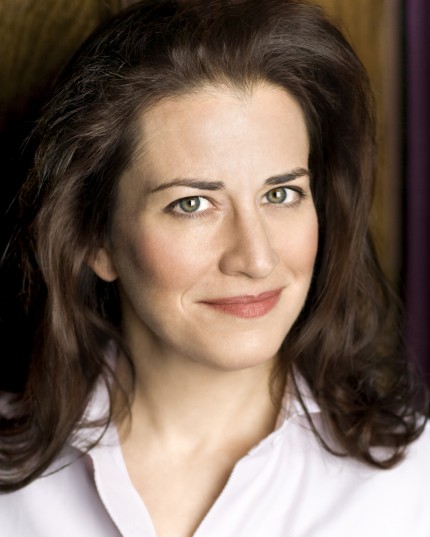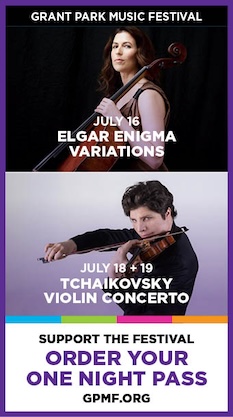Soprano Brandes shines in wide-ranging Rembrandt Chamber Players closer

Nichols Hall in Evanston played host to the Rembrandt Chamber Players’ final concert of the season Sunday night. The evening boasted an eclectic program with a range of music spanning three centuries.
Soprano Christine Brandes and Rembrandt cellist Barbara Haffner led off with William O. Smith’s Songs for Soprano and Cello. A musician with two delineated sides, he goes by William O. Smith when creating compositions that blend jazz and classical, and Bill Smith when playing the jazz clarinet.
Kenneth Patchen is the librettist for the Songs, a central figure in the free jazz and poetry movements of the sixties. Smith did a wonderful job setting the abstract text, and Brandes and Haffner performed these difficult pieces with technical accuracy and understanding.
The unique instrumentation of voice and cello worked well. In the first and last songs Brandes and Haffner sang together in grand, intertwining, expressive lines. The second setting, “The Magical Mouse,” was a humorous piece that featured an array of extended techniques on the cello and a buoyant vocal line. The third paired the sharp, percussive qualities of a cello played pizzicato with the long, lyrical, sustained vocal phrases in an effective juxtaposition.
Unfortunately, no texts were provided for the Smith songs, and with Brandes’ words not always clear, it was anyone’s guess what some of the texts were about.
Born in 1916, Henri Dutilleux is still composing at the age of 97. His Les Citations, scored for oboe, harpsichord, double-bass, and percussion was written in 1985. Dutilleux added a third and final movement in 2010, but for this performance Les Citations was performed in its original two-movement form. The first section is dedicated to Peter Pears and Benjamin Britten, the second movement to Dutilleux’s close friend, the organist and composer Jehan Alain, who was killed in action in World War II at the age of 29.
In this uniquely scored work, it was clear that each instrument was chosen for a specific sonic reason. The harpsichord, played by Stephen Alltop, generated a soft fuzz of cluster tones. Oboist Robert Morgan played in long, sustained, lyrical passages, sometimes with the added effect of multiphonics.
Bassist Collin Trier at times threw off a jazzy pizzicato line and at others a delicate floating line in false harmonics. The percussion, played by She-e Wu, brought it all together through a variety of colorful sounds – the sustained shimmer of the gong, sharp treble attack of the snare, and mellow echoes of the marimba. The quartet played this difficult music on the edge of their seats, and a few rushed entrances apart, performed Dutilleux’s challenging work very well.
Brandes, Morgan, and Alltop returned with flutist Sandra Morgan for what Brandes called two “palate cleansing” arias by Handel (Susse Stille, sanfte Quelle and Kunft’ger Zeiten eitler Kummer). Brandes sang these pieces with sensitivity and clarity, with Robert Morgan’s exceptional oboe playing creating a real dialogue with the soprano in the second setting.
Ravel’s striking, and rather peculiar Chansons Madécasses, scored for soprano, flute, cello and piano, do not reflect the more detached, atmospheric Ravel, but a more emotionally intense and involved one. The poetry of Evariste de Parny, an 18th century poet born in Madagascar to white colonists, is sensual and erotic in the first and last setting, with the middle song a frantic warning against colonization.
Though Brandes’ singing has been impressive in the other works, Ravel’s sensuous vocal lines and the French language brought out the best in her voice. Haffner, Sandra Morgan and pianist Jeannie Yu played wonderfully together, though the balances too often buried the flute line.
Astor Piazzolla’s Four Seasons of Buenos Aires, concluded the evening. The scoring of violin, cello, bass and piano was especially effective for these jazz-infused tangos. The bass and piano played the part of an active rhythm section of a jazz quartet, and the violin and cello played the role of the front men.
Each movement featured the instruments as soloists, predominantly the violin and cello. Violinist David Perry did a particularly fantastic job, capturing the tango vibe and communicating with spot-on intonation and a wide range of vibrato. The group was in sync and genuinely seemed to be enjoying themselves, the Piazzolla providing a fine end to this program’s unique journey.
The concert was dedicated to Martyl Langsdorf, a founding advisory board member to the Rembrandt Chamber Players.
Posted in Performances



Posted May 22, 2013 at 9:41 am by sad
Dutilleux died today 22/05/13